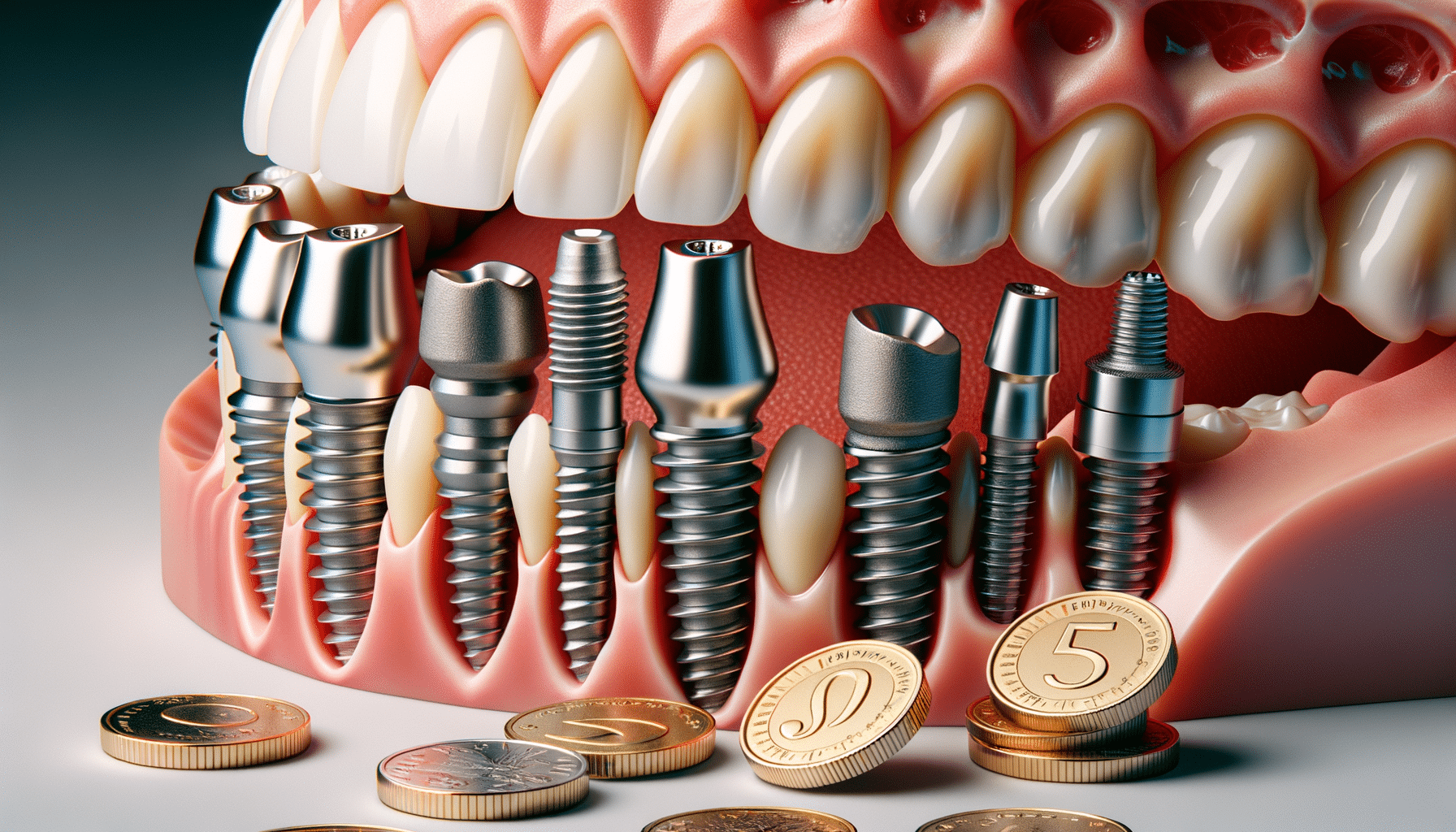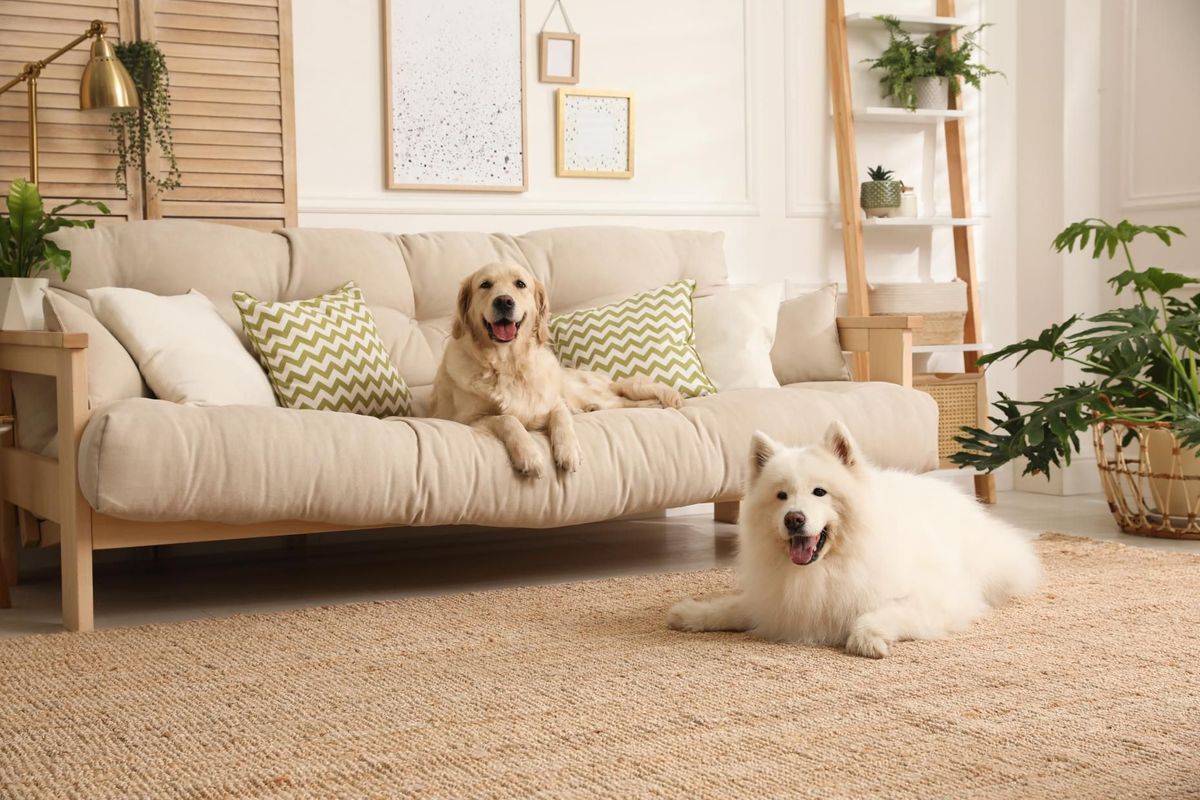
Designing a Home That’s Perfect for Pets & Owners
In recent years, the trend of creating pet-friendly homes has gained significant traction, both in the UK and globally. With pets becoming integral members of our families, it is only natural to consider their comfort and safety when designing our living spaces. A home that accommodates the needs of both pets and owners ensures harmony, functionality, and well-being for all inhabitants.
Designing a pet-friendly home goes beyond simply installing a pet door or adding a dog bed. It requires a thoughtful approach to layout, materials, and safety features. From durable flooring and easy-to-clean fabrics to built-in pet amenities, a well-planned home design can cater to the needs of pets while maintaining a stylish and organised living space.
Key Benefits of a Pet-Friendly Home
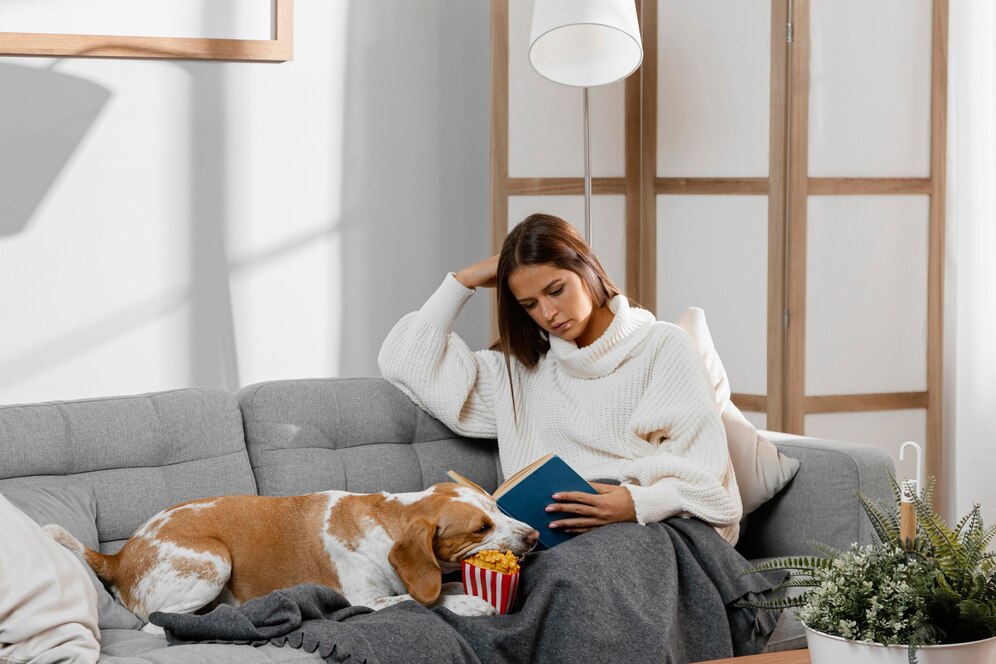
1. Enhances Pet Comfort and Well-being
A home designed with pets in mind significantly improves their quality of life. Pets thrive in environments that cater to their physical and emotional needs, providing them with comfort, stimulation, and security.
How It Helps:
- Reduces stress: Dedicated spaces for pets allow them to relax and unwind without interference.
- Promotes physical activity: Designated play areas encourage pets to exercise and stay active, which is essential for their overall health.
- Supports mental stimulation: Vertical spaces, interactive toys, and outdoor access prevent boredom and destructive behaviour.
2. Enhances Safety Indoors
Pet safety is a key consideration when designing your home. Pets are naturally curious and prone to accidents and injuries if hazards are not minimised. A well-planned layout and thoughtful material choices help prevent potential dangers.
Key Safety Measures:
- Non-toxic materials: Use paints, cleaning products, and plants that are safe for pets.
- Secure electrical cords: Prevent chewing-related accidents by using cord protectors or cable management systems.
- Escape prevention: Install pet gates or secure fencing to prevent pets from wandering into unsafe areas.
3. Minimises Home Wear and Tear
Pets can be tough on interiors, with scratching, shedding, and occasional accidents taking a toll on floors, furniture, and walls. Using durable, pet-friendly materials reduces long-term damage and maintenance costs.
Key Benefits:
- Scratch-resistant flooring: Reduces visible damage from claws.
- Stain-resistant fabrics: Easier to clean and maintain.
- Washable wall paint: Makes cleaning pet-related marks and smudges effortlessly.
4. Increases Property Appeal
Pet-friendly features can make your home more attractive to future buyers, especially as pet ownership continues to grow.
How It Adds Value:
- Built-in pet amenities (e.g., pet wash stations or integrated feeding areas) add functionality and appeal.
- Durable finishes reduce visible signs of wear, keeping the home looking well-maintained.
- Outdoor pet-friendly landscaping can be a unique selling point for potential buyers.
Step-by-Step Guide to Designing a Pet-Friendly Home
Step 1: Choose Durable and Pet-Safe Materials
Selecting the right materials and finishes is crucial for creating a stylish yet practical pet-friendly home.
Flooring
Pet-friendly flooring should be durable, easy to clean, and resistant to scratches and stains.
- Best options:
- Luxury vinyl plank (LVP): Scratch-resistant, waterproof, and comfortable for pets.
- Laminate or tile: Durable and easy to clean, ideal for homes with larger pets.
- Avoid:
- Carpets: Difficult to clean and prone to trapping pet hair and odours.
- Softwood flooring: Susceptible to claw marks and scratches.
Furniture Fabrics
Choose durable, stain-resistant fabrics that can withstand daily wear and tear from pets.
- Best options:
- Leather: Easy to wipe clean and resists odours.
- Microfiber: Durable, pet-friendly, and resistant to stains.
- Avoid:
- Velvet or silk: Prone to snagging and difficult to clean.
- Loose-weave fabrics: Easily damaged by pet claws.
Paint and Wall Coverings
Pets often brush against walls, leaving smudges and marks. Opt for washable and durable finishes.
- Best options:
- Semi-gloss or satin paints: Easier to clean and more resistant to scuffs.
- Washable wallpapers: Ideal for high-traffic pet areas.
Step 2: Designate Pet Zones
Create dedicated spaces tailored to your pet’s needs, ensuring comfort and convenience for both you and your pet.
Feeding Stations
Design built-in feeding areas with:
- Elevated feeding bowls to reduce neck strain.
- Pull-out drawers for food and treat storage.
- Easy-to-clean surfaces to prevent mess build-up.
Sleeping Areas
Provide pets with comfortable and cosy sleeping spots.
- Built-in pet beds can blend seamlessly with your decor.
- Use washable covers to maintain hygiene and reduce odours.
- Place beds away from busy areas for a quiet, restful environment.
Pet Play Areas
Incorporate indoor play zones to keep your pet active and entertained.
- Vertical cat trees or shelves provide climbing opportunities.
- Built-in scratching posts prevent cats from damaging furniture.
- Open spaces with durable flooring allow dogs to play indoors.
Step 3: Prioritise Safety Indoors
Pet safety is paramount. A few thoughtful adjustments can prevent accidents and hazards.
Secure Hazardous Items
- Store cleaning supplies, medications, and chemicals in locked cabinets.
- Use cord protectors to prevent pets from chewing on electrical wires.
Install Pet Gates
Pet gates help restrict access to certain areas, such as kitchens or staircases.
- Choose sturdy, easy-to-install gates that fit your home’s aesthetic.
Use Pet-Safe Plants
Many common plants are toxic to pets. Replace them with pet-safe varieties, such as:
- Spider plants
- Areca palms
- Boston ferns
Step 4: Optimise Outdoor Spaces
If you have a garden or patio, create a pet-friendly outdoor area for play and exploration.
Secure Fencing
Install secure fencing to prevent pets from escaping.
- Smooth edges and no gaps ensure your pet cannot squeeze through.
- Add cat-proof fencing or netting for feline safety.
Designated Play Areas
Include a pet play zone with interactive features.
- Dog-friendly agility equipment encourages physical activity.
- Sandbox or digging pit allows dogs to satisfy their digging instincts.
Additional Expert Tips & Common Mistakes to Avoid
Expert Tips
- Custom pet furniture: Invest in stylish pet furniture that blends with your decor, such as modern pet beds or litter box enclosures.
- Pet doors with microchip access: For added security, use smart pet tech doors that only open for your pet’s microchip.
- Durable rugs and mats: Place washable rugs in high-traffic pet areas to protect your flooring.
Common Mistakes to Avoid
- Using fragile decor: Delicate items can easily be knocked over by pets. Choose sturdy decor pieces.
- Ignoring ventilation: Pet areas can develop odours. Ensure proper ventilation and air circulation.
- Cluttered spaces: Clutter makes it harder to keep your home clean. Use storage solutions to keep pet supplies organised.
Advanced Insights: Elevating Your Pet-Friendly Home
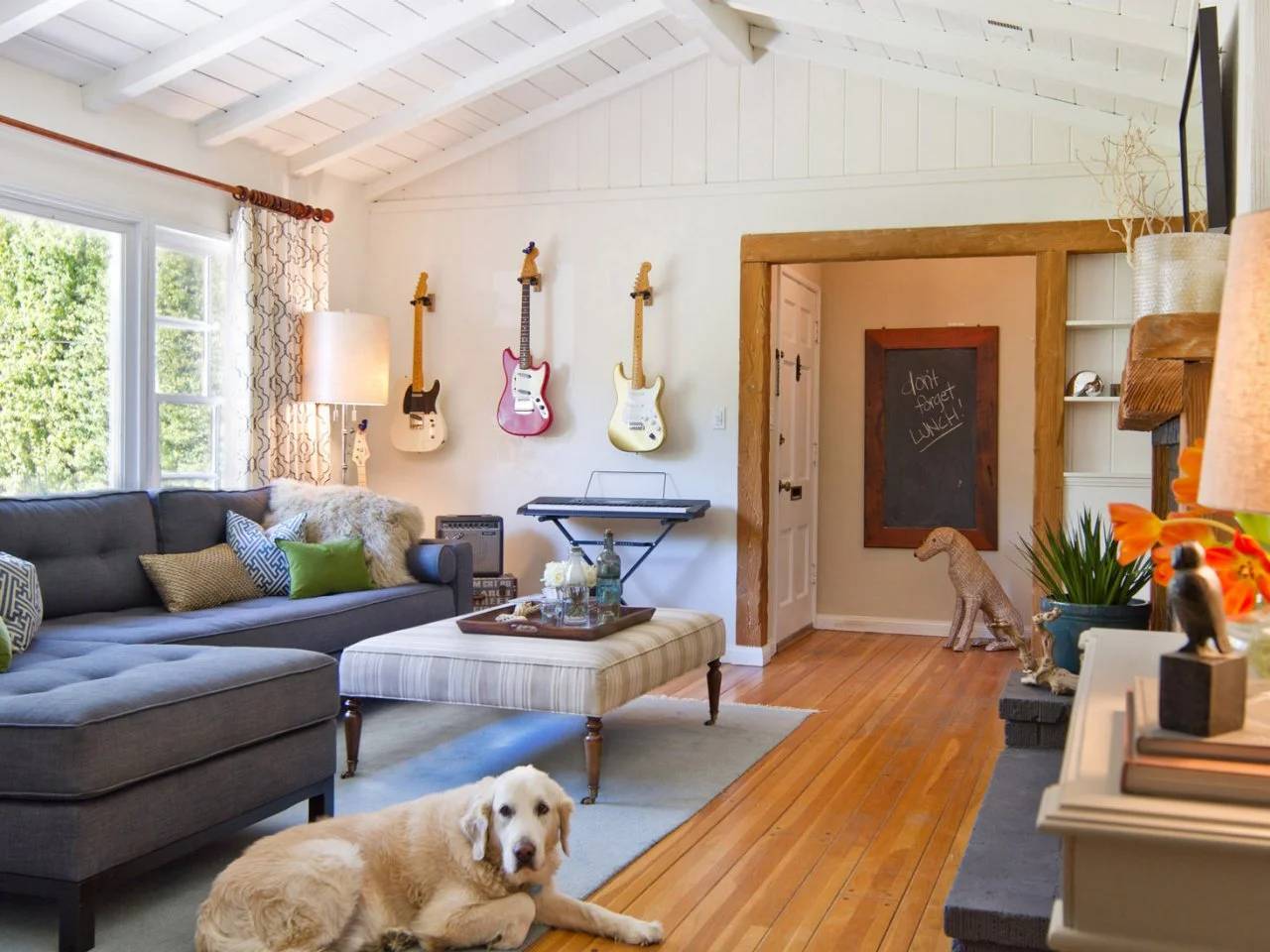
Smart Home Technology
Enhance convenience with smart pet technology, such as:
- Pet cameras: Monitor your pets when you are away.
- Automatic feeders: Maintain a consistent feeding schedule.
- Climate control: Ensure pets stay comfortable with automated heating and cooling.
Sustainable and Eco-Friendly Design
Use eco-friendly materials to create a sustainable, pet-friendly home:
- Non-toxic paints and finishes.
- Sustainable flooring options, such as bamboo or cork.
A Harmonious Home for Pets and Owners
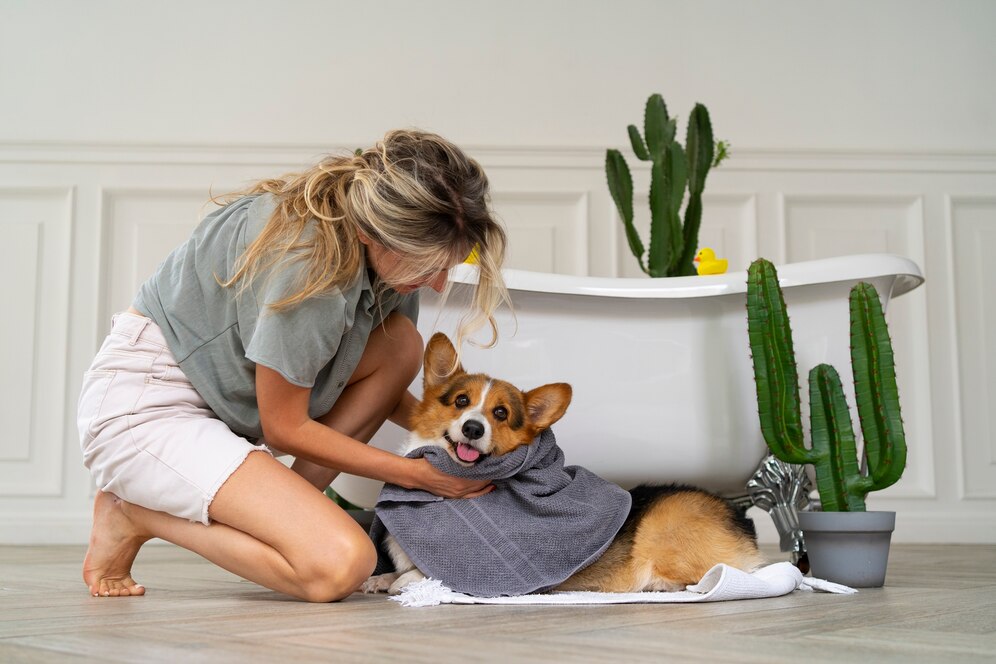
Designing a pet-friendly home enhances both comfort and functionality, creating a safe and stylish environment for pets and owners alike. By incorporating durable materials, dedicated pet zones, and safety features, you can transform your home into a comfortable haven for your furry companions.
As you embark on this journey, consider your pet’s specific needs and behaviours. With thoughtful design choices, you can create a space that promotes health, happiness, and harmony for every member of your household.

